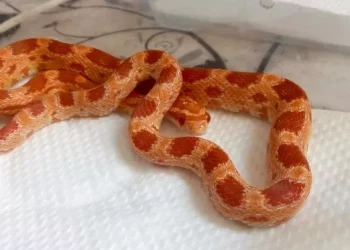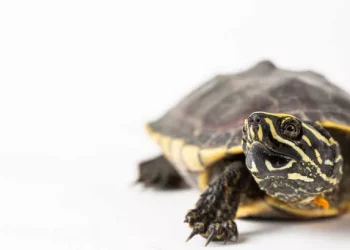Corn snakes, those charming, colorful reptiles, are becoming increasingly popular pets. Their docile nature and striking patterns make them appealing to reptile enthusiasts and casual pet owners alike. However, before bringing home a corn snake, it’s crucial to understand its habitat requirements, especially the size of the terrarium it needs. In this article, we’ll dive into the world of corn snakes and explore how big of a terrarium corn snakes require, all while having a little fun along the way.
The Basics: What is a Corn Snake?
Corn snakes (Pantherophis guttatus) are non-venomous constrictors native to North America. They are often found in forests, fields, and even abandoned buildings. With their vibrant colors and patterns, corn snakes have become a staple in the pet trade. They are known for their calm demeanor, making them ideal pets for beginners. A corn snake can grow to be between 2 to 6 feet long, depending on its age and subspecies. That’s a lot of snake!
What Do Corn Snakes Look Like?
Corn snakes boast a variety of colors and patterns. Commonly, they exhibit orange or brown with black or brown blotches. These patterns help them blend into their natural habitats. Some corn snakes even have unique color morphs, including albino, lavender, and snow, which are favorites among collectors. Their scales are smooth, and they have a slender build, making them a joy to handle.
Why Terrarium Size Matters
Just like any pet, corn snakes need the right environment to thrive. A terrarium provides a safe space for your snake to explore, bask, and hide. But how big does it need to be? The answer isn’t as straightforward as one might think. Let’s break it down.
Minimum Terrarium Size Recommendations
The general rule of thumb is that a corn snake should have a terrarium that is at least one and a half times its length. For example, if you have a corn snake that is 4 feet long, its terrarium should be a minimum of 6 feet long. However, many experts recommend going larger if possible. A spacious terrarium allows for better movement and reduces stress.
Here’s a simple guideline based on the snake’s size:
Hatchlings (up to 1.5 feet): A 20-gallon terrarium (30” x 12” x 12”) is sufficient.
Juveniles (1.5 to 3 feet): A 40-gallon terrarium (48” x 12” x 16”) is recommended.
Adults (3 to 6 feet): A 75 to 100-gallon terrarium (60” x 18” x 24” or larger) is ideal.
While these recommendations are helpful, it’s essential to remember that bigger is always better when it comes to providing a comfortable habitat.
Factors Influencing Terrarium Size
Several factors can influence the ideal size of a terrarium for your corn snake. Let’s take a closer look at these factors.
Age and Size of the Snake
As mentioned earlier, the size of your snake directly impacts the size of its enclosure. Hatchlings require less space, but they will grow quickly. Ensure you have a plan for upgrading their habitat as they mature.
Activity Level
Some corn snakes are more active than others. If your snake is the type that loves to explore, a larger terrarium will provide plenty of room for exercise. A spacious environment encourages natural behaviors, such as climbing, hiding, and exploring.
Enrichment and Decor
The decor in your snake’s terrarium also affects how much space it needs. If you plan to add climbing branches, rocks, and hides, you’ll want a larger terrarium. A well-decorated habitat not only keeps your snake happy but also mimics its natural environment.
Designing the Perfect Terrarium
Creating a suitable terrarium for your corn snake involves more than just picking the right size. Let’s explore how to design the ideal habitat for your scaly friend.
Choosing the Right Material
Terrariums come in various materials, including glass, plastic, and wood. Glass terrariums are popular because they allow for easy viewing and temperature control. Ensure that the terrarium has a secure lid to prevent escape.
Heating and Lighting
Corn snakes are ectothermic, meaning they rely on external sources to regulate their body temperature. A temperature gradient is crucial for their well-being. One side of the terrarium should be warmer, with a basking area, while the other side should be cooler.
Basking Area: Create a basking spot with a heat lamp or a heat pad, maintaining a temperature of 80-85°F (27-29°C).
Cool Side: The cooler side should have a temperature of around 70-75°F (21-24°C).
Additionally, a light cycle of 12 hours of light and 12 hours of darkness mimics natural conditions and helps regulate your snake’s circadian rhythm.
Substrate Selection
The substrate you choose can impact your snake’s comfort and health. Here are a few popular options:
Aspen Shavings: Absorb moisture well and provide a natural feel.
Coconut Fiber: Retains humidity and is eco-friendly.
Reptile Carpet: Easy to clean and does not hold moisture.
Avoid using sand or gravel, as they can cause impaction if ingested.
Hiding Spots
Corn snakes are naturally shy creatures. Providing hiding spots is essential for their well-being. Use rocks, logs, or commercial hides to create safe spaces. Place at least two hiding spots in the terrarium—one on the warm side and one on the cool side.
Climbing Structures
Although corn snakes are primarily ground-dwellers, they enjoy climbing. Adding branches or platforms can enrich their environment. Ensure that any climbing structures are sturdy and secure.
Water Bowl
A shallow water bowl is necessary for hydration. Make sure it is large enough for your snake to soak in but shallow enough to prevent drowning. Change the water regularly to keep it clean and fresh.
Maintenance and Cleaning
Keeping your corn snake’s terrarium clean is vital for its health. Here’s a quick cleaning routine:
Daily: Check for uneaten food, droppings, and water quality. Replace the water as needed.
Weekly: Spot clean any soiled substrate and wipe down surfaces.
Monthly: Perform a deep clean. Remove all decorations and substrate. Clean with reptile-safe disinfectant and rinse thoroughly before adding everything back.
Signs of a Happy Corn Snake
A healthy and happy corn snake will exhibit certain behaviors. Here are some signs to look for:
Active Exploration: Your snake should move around its habitat, exploring and climbing.
Proper Shedding: A corn snake should shed its skin regularly without any retained skin on its body.
Good Appetite: A healthy corn snake will eat regularly and show interest in food during feeding times.
Common Mistakes to Avoid
Even seasoned pet owners can make mistakes when caring for corn snakes. Here are some common pitfalls to watch out for:
Too Small of a Terrarium
Many new owners underestimate how much space a corn snake needs. Providing a terrarium that is too small can lead to stress and health issues. Always opt for a larger enclosure if you’re uncertain.
Inconsistent Temperatures
Temperature regulation is critical for your snake’s health. Ensure that the temperature gradient is maintained, and use reliable thermometers to monitor conditions.
See Also: What Size Enclosure Does a Corn Snake Need?
Poor Hydration
Corn snakes need access to fresh water at all times. Make sure the water bowl is clean and filled, and replace it regularly.
Ignoring Behavior
Pay attention to your snake’s behavior. If it seems lethargic, refuses to eat, or hides excessively, it may be stressed or unwell. Investigate potential causes, such as inadequate space or improper environmental conditions.
The Importance of Research
Before bringing a corn snake home, it’s essential to do thorough research. Understanding their needs and behaviors will help you provide a suitable environment. Many online resources, forums, and books can guide you in becoming a responsible snake owner.
The Cost of Ownership
Owning a corn snake isn’t just about the initial purchase price. Consider the ongoing costs of food, bedding, heating, and habitat maintenance. A larger terrarium may require more substrate and decor, so factor this into your budget.
Frequently Asked Questions
Can I keep multiple corn snakes in one terrarium?
It’s not recommended. Corn snakes are solitary creatures and can become stressed if housed together.
What temperature should I keep my corn snake’s terrarium?
Maintain a temperature gradient with a warm side (80-85°F) and a cool side (70-75°F).
How often should I feed my corn snake?
Feed your corn snake every 1-2 weeks, depending on its age and size.
How long do corn snakes live?
With proper care, corn snakes can live between 15 to 20 years, sometimes longer!
What should I do if my corn snake refuses to eat?
Try adjusting the temperature or habitat conditions. If it persists, consult a veterinarian.
Conclusion
So, how big of a terrarium does a corn snake need? The answer is not just about dimensions but also about creating a suitable environment for your slithery friend. By following the guidelines and ensuring your snake has enough space to thrive, you’ll help it live a long and happy life.
Corn snakes are wonderful pets that can bring joy and fascination to your life. With the right terrarium size and setup, you’ll have a healthy and happy snake, and you might just find yourself enchanted by its graceful movements and vibrant colors. Remember, a happy snake is a happy owner!
Related Topics:



























